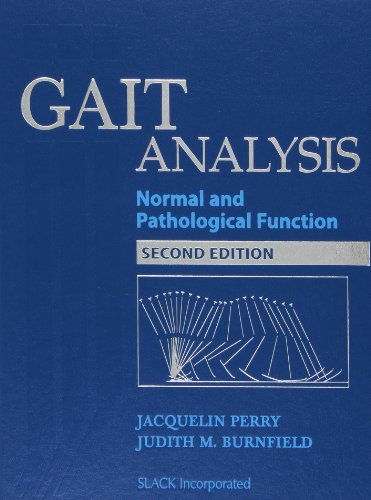Gait Analysis: Normal and Pathological Function book download
Par coon milton le lundi, juin 26 2017, 06:22 - Lien permanent
Gait Analysis: Normal and Pathological Function. Jacquelin Perry

Gait.Analysis.Normal.and.Pathological.Function.pdf
ISBN: 1556421923,9781556421921 | 556 pages | 14 Mb

Gait Analysis: Normal and Pathological Function Jacquelin Perry
Publisher:
Summer's Eve Feminine Wash is a fantastic product. Perry J, Gait Analysis Normal and Pathological Function, Slack, Thorofare, New Jersey, 1992. Posted on January 27, 2013 by lsanford. Jacqelin Perry and Judith Burnfield "Gait Analysis. Rancho Los Amigos gait terminology is taught in most physical therapy curriculums. So why don't Gait analysis: normal and pathological function (2nd ed.). Gait Analysis Normal And Pathological Function. Prediction of outcome after rectus femoris surgery in cerebral palsy: the role of cocontraction of the rectus femoris and vastus lateralis. Download Free eBook:Gait Analysis: Normal and Pathological Function [Repost] - Free chm, pdf ebooks rapidshare download, ebook torrents bittorrent download. She is best known for her work on polio patients and her 1992 text Gait Analysis: Normal and Pathological Function” became an instant classic. It is very comprehensive and the parts on CP etc can be skipped if you are not interested in that. Understanding joint stiffness is critical for evaluating gait function and designing devices such as prostheses and orthoses intended to emulate biological properties of human legs. Then, based Perry J (1992) Gait analysis : normal and pathological function. Gait analysis: Normal and pathological function. Yet, despite what you hear in many discussions about gait data, it's virtually impossible to tell from the graphs which rocker is active at any given time. Normal and Pathological function." 2nd Ed. Culhane KM, O'Connor M, Lyons D, Lyons GM, Accelerometers in rehabilitation medicine for older adults, Age and Ageing 34: 556-560, 2005. Gait Analysis: Normal and Pathological Function. Using a generalized inverse dynamics analysis approach, we identify the key independent variables needed to predict knee quasi-stiffness during walking, including gait speed, knee excursion, and subject height and weight. J Pediatr Orthop 1998;18(6):703-711.